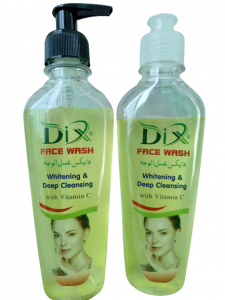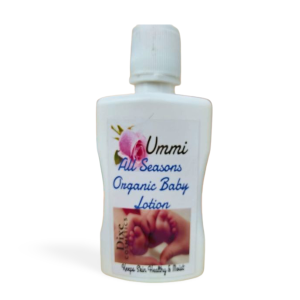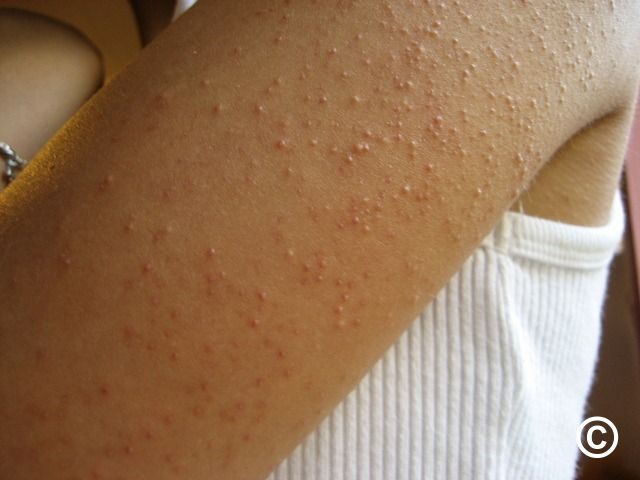Keratosis pilaris is a common skin condition. It is a benign condition characterized by numerous small, rough, red, or tan bumps primarily around hair follicles on the upper arms, legs, buttocks, and sometimes cheeks.
Thank you for reading this post, don't forget to subscribe!Keratosis pilaris creates a “goosebumps,” “gooseflesh,” or “chicken skin” appearance, affecting nearly 50–80 percent of adolescents and 40 percent of adults. It looks like tiny, rough-feeling bumps on the skin that may be mistaken for small pimples.
Keratosis pilaris is the formation of rough-feeling bumps on the surface of the skin caused by clogged hair follicles (the buildup of keratin forms plugs in the openings of hair follicles). These bumps are technically called “follicular keratotic papules. Inside the plugged hair follicles, there may also be one or more twisted hairs; in fact, some scientists believe that keratosis pilaris is actually caused by thick hairs that form large coils under the superficial epidermis, or outer layers of the skin. Studies analyzing this theory suggest that the circular hair shaft ruptures follicle cells, leading to inflammation and abnormal keratin release. ”
They can affect any skin surface where hair grows. The most prominent symptom of Keratosis pilaris is small, dry bumps that can feel a bit like sandpaper or goosebumps. The bumps are usually white. But sometimes they appear red, or a reddish-pink color may develop around the bumps. The number of bumps in one location varies, as a person can develop 10, 50 even 100 small bumps in one area.
The most common site of Keratosis pilaris is the surface of the upper arms, occurring in 92 percent of patients. Other common areas are the thighs and the buttocks. Some people also develop bumps on their face, especially the cheeks, which is commonly mistaken for acne. Keratosis pilaris is not contagious.
Causes
The exact cause of keratosis pilaris is unknown. There seems to be a problem with overproduction of the keratin part of the skin producing hyperkeratinization. Others believe that there may be some defect in hair formation, producing defective sebaceous glands, which might partially explain its physical association with hair follicles.
A majority of patients with keratosis pilaris have a known genetic predisposition and affected family members. Keratosis pilaris may also be present with ichthyosis vulgaris, dry skin, seasonal inhalant allergies (hay fever), rhinitis, asthma, eczema, and atopic dermatitis.
The bumps in keratosis pilaris seem to arise from the excessive accumulation of keratin from the superficial layer of skin at individual hair follicles. The skin as examined under the microscope demonstrates mild thickening and perforation of the hair follicle. The upper skin layers may have some dilation of the small superficial blood vessels, thereby giving the skin a red or flushed appearance.
Symptoms
Typically, keratosis pilaris patients present with a scattered, patchy rash composed of very small red or tan bumps. It is rare to have keratosis pilaris all over the body. The lesions in keratosis pilaris most characteristically involve the back of the upper arms. Other common locations include the back, thighs, buttocks, and occasionally the face. It does not affect the eyes, mouth, palms, or soles.
Anywhere from 10 to hundreds of very small slightly rough bumps produce a fine sandpaper-like texture. Some of the bumps may be slightly red or have an accompanying light-red halo, indicating inflammation.
Sometimes, a small, coiled hair gets trapped beneath the rough bump. Patients may complain of a rough texture and an irregular cosmetic appearance of the skin. The cheeks may appear pink, red, flushed, and studded with very small (pinpoint) bumps.
Diagnosis
The diagnosis of keratosis pilaris is very straightforward and based on a typical skin appearance in areas like the upper arms. In late-onset keratosis pilaris occurring in adulthood, one needs to consider a drug as a possible cause. Specific laboratory tests are not needed for the diagnosis. Skin biopsy (surgically taking a small piece of skin using local numbing medicine) may be useful in atypical or widespread cases.
Differentiation:
Histopathology or pathology are terms for the microscopic examination of the body tissue under high magnification by a pathologist or dermatopathologist. Histopathology of keratosis pilaris shows modest thickening of the outer layer of skin (hyperkeratosis of the stratum corneum), increase in the granular cells of the epidermis (hypergranulosis), and plugging of individual hair follicles. The upper dermis (layer of the skin below the epidermis) may have some microscopic inflammation called mild superficial perivascular lymphocytic inflammatory changes. Keratosis pilaris atrophicans is a group of related disorders, and it’s characterized by inflammatory keratotic papules. This inflammatory skin reaction may cause alopecia and scarring.
Keratosis pilaris may resemble the following:
- Acne
- Milia
- Folliculitis
- Eczema
- Atopic dermatitis
- Facial rosacea
- Dry skin (xerosis)
And some uncommon skin conditions:
- Lichen spinulosus
- Pityriasis rubra pilaris
- Phrynoderma (vitamin A deficiency)
- Ulerythema ophryogenes
- Ichthyosis vulgaris
- Eruptive vellus hair cysts
- Keratosis follicularis (Darier disease)
- Kyrle disease
- Lichen nitidus
- Lichen spinulosus
- Perforating folliculitis
- Trichostasis spinulosa
Erythromelanosis follicularis faciei et colli is another related but much more rare skin condition, it’s associated with Keratosis pilaris over affected areas. Erythromelanosis follicularis faciei is recognized by reddish-brown patches, usually on the cheeks and ears.
Allopathic treatment for keratosis pilaris
There is no available cure in allopathic medicine. Complete clearing is not be possible with lotions, moisturisers and creams.
Healthcare providers recommend general measures to prevent excessive skin dryness, such as using mild soapless cleansers. Frequent skin lubrication is the mainstay of allopathic treatment for nearly all cases.
- Basic over-the-counter moisturizers and/or ointment may improve mild cases of keratosis pilaris.
- Additional available therapeutic options for more difficult cases of keratosis pilaris include lactic-acid lotions, alpha-hydroxy-acid lotions, urea creams, salicylic acid, topical cream, and topical steroid cream.
- Recently, medical professionals have recommended laser treatment for keratosis pilaris.
- New unproven treatments include topical chlorine dioxide complex wash, ammonia-oxidizing bacteria spray-on mist, and photopneumatic therapy.
- Carbon dioxide laser (mixed results).
Because keratosis pilaris is generally a chronic condition requiring long-term maintenance, allopathic therapies would require repeated or long-term use for optimum results.
Homeopathic treatment for keratosis pilaris
There are lot of Homeopathic medicines and with Dniper Cosmetic’s Face washes and Ummi Lotions
and Ummi Lotions  (moisturizing lotions that contain lactic acid, salicylic acid, glycolic acid and urea); these are keratolytic agents that thin the skin on and around areas where lesions or excess skin has developed, that will not only help to minimize the appearance of Keratosis pilaris but treat them permanently and leave your skin looking clearer and healthy.
(moisturizing lotions that contain lactic acid, salicylic acid, glycolic acid and urea); these are keratolytic agents that thin the skin on and around areas where lesions or excess skin has developed, that will not only help to minimize the appearance of Keratosis pilaris but treat them permanently and leave your skin looking clearer and healthy.
Research shows that because keratosis pilaris symptoms commonly develop among adolescents, the skin condition may have a psychosocial impact. In fact, it has been associated with developmental issues of body image, sexuality and socialization.
Homeopathic dilutions for Keratosis Pilaris
Arsenicum Album
Itching, burning, swellings; oedema, eruption, papular, dry, rough, scaly; worse cold and scratching. Malignant pustules. Ulcers with offensive discharge. Anthrax. Poisoned wounds. Urticaria, with burning and restlessness. Psoriasis. Scirrhus. Icy coldness of body. Epithelioma of the skin. Gangrenous inflammations.
Zincum Metallicum
Varicose veins, especially of lower extremities. Formication of feet and legs as from bugs crawling over the skin, preventing sleep. Eczema, especially in the anaemic and neurotic. Itching of thighs and hollow of knees. Retrocession of eruptions.
Hepar Sulphuricum
Abscesses; suppurating glands are very sensitive. Papules prone to suppurate and extend. Acne in youth. Suppurate with prickly pain. Easily bleed. Angioneurotic oedema. Unhealthy skin; every little injury suppurates. Chapped skin, with deep cracks on hands and feet. Ulcers, with bloody suppuration, smelling like old cheese. Ulcers very sensitive to contact, burning, stinging, easily bleeding. Sweats day and night without relief. “Cold-sores” very sensitive. Cannot bear to be uncovered; wants to be wrapped up warmly. Sticking or pricking in afflicted parts. Putrid ulcers, surrounded by little pimples. Great sensitiveness to slightest touch. Chronic and reoccurring urticaria. Smallpox. Herpes circinatus. Constant offensive exhalation from the body.
Graphitus
Rough, hard, persistent dryness of portions of skin unaffected by eczema. Early stage of keloid and fibroma. Pimples and acne. Eruptions, oozing out a sticky exudation. Rawness in bends of limbs, groins, neck, behind ears. Unhealthy skin; every little injury suppurates. Ulcers discharging a glutinous fluid, thin and sticky. Swelling and induration of glands. Gouty nodosities. Cracks in nipples, mouth, between toes, anus. Phlegmonous erysipelas of face.
Mezereum
Eczema; intolerable itching; chilliness with pruritus; worse in bed. Ulcers itch and burn, surrounded by vesicles and shining, fiery-red areola. Zona, with burning pain. Bones, especially long bones, inflamed and swollen; caries, exostosis; pain worse night, touch, damp weather. Eruptions ulcerate and form thick scabs under purulent matter exudes.
Syphilinum
Reddish-brown eruption, with a disagreeable odor. Extreme emaciation.
Mercurius Solubilis
Almost constantly moist. Persistent dryness of the skin contra indicates mercurius. Excessive odorous viscid perspiration; worse, night. General tendency to free perspiration, but patient is not relieved thereby. Vesicular and pustular eruptions. Ulcers, irregular in shape, edges undefined. Pimples around the main eruption. Itching, worse from warmth of bed. Crusta lactea; yellowish-brown crusts, considerable suppuration. Glands swell every time patient takes cold. Buboes. Orchitis.
Rhus Toxicodendron
Skin red, swollen; itching intense. Vesicles, herpes; urticaria; pemphigus; erysipelas; vesicular suppurative forms. Glands swollen. Cellulitis. Burning eczematous eruptions with tendency to scale formation.
Bovista Lycoperdon
Skin blunt instrument leave deep impression on the skin. Urticaria on excitement, with rheumatic lameness, palpitation and diarrhoea. Itching on getting warm. Eczema, moist; formation of thick crusts. Pimples cover the entire body; scurvy; herpetic eruptions. Pruritus ani. Urticaria on waking in the morning, worse from bathing. Pellagra.
Alumen
Ulcers, with indurated base. To be thought of in indurated glands, epithelioma, etc; veins become varicose and bleed. Indurations resulting from long-continued inflammatory irritations. Glands inflame and harden. Alopecia, Scrotal eczema and on back of penis.
Borax
Psoriasis. Erysipelas in face. Itching on back of finger-joints. Unhealthy skin; slight injuries suppurate. Herpes. Erysipelatous inflammation with swelling and tension. Chilblains relieved in open air. Trade eruptions on fingers and hands, itching and stinging. Ends of hair become tangled.
Phosphorus
Wounds bleed very much, even if small; they heal and break out again. Jaundice. Little ulcer outside of large ones. Petechiae. Ecchymosis. Purpura hemorrhagica. Scurvy. Fungus haematodes and excrescences.
Sulphur
Dry, scaly, unhealthy; every little injury suppurates. Freckles. Itching, burning; worse scratching and washing. Pimply eruption, pustules, rhagades, hangnails. Excoriation, especially in folds. Feeling of a band around bones. Skin affections after local medication. Pruritus.
Lithium Carbonicum
Skin scabby, tettery eruption on hands, head, and cheeks, preceded by red, raw skin. Dull stitch, ending in itching. Barber’s itch. Rough rash all over body, much loose epithelium, tough, dry, itchy skin.
Agaricus Muscarious
Itching and titillation, which force the sufferer to scratch himself. Itching, burning pain, and redness as from chilblains in different parts of the body. Miliary eruption, whitish and close-grained, with excessive itching.
Lycopodium Clavatum
Ulcerates. Abscesses beneath skin; worse warm applications. Hives; worse, warmth. Violent itching; fissured eruptions. Acne. Chronic eczema associated with urinary, gastric and hepatic disorders; bleeds easily. Skin becomes thick and indurated. Varicose veins, naevi, erectile tumors. Brown spots, freckles worse on left side of face and nose. Dry, shrunken, especially palms; hair becomes prematurely gray. Dropsies. Offensive secretions; viscid and offensive perspiration, especially of feet and axilla. Psoriasis.
Thuja Occidentalis
Polypi, tubercles, warts epithelioma, naevi, carbuncles; ulcers, especially in ano-genital region. Freckles and blotches. Perspiration sweetish, and strong. Dry skin, with brown spots. Zona; herpetic eruptions. Tearing pains in glands. Glandular enlargement. Nails crippled; brittle and soft. Eruptions only on covered parts; worse after scratching. Very sensitive to touch. Coldness of one side. Sarcoma; polypi. Brown spots on hands and arms.
For consultation; Feel free to whatsapp us or visit our clinic.
P. S : This article is only for doctors having good knowledge about Homeopathy and allopathy, for learning purpose(s).
For proper consultation and treatment, please visit our clinic.
Location, address and contact numbers are given below.
NoN of above mentioned medicine(s) is/are the full/complete treatment, but just hints for treatment; every patient has his/her own constitutional medicine.
To order medicine by courier, please send your details at WhatsApp– +923119884588
 Dr. Sayyad Qaisar Ahmed (MD {Ukraine}, DHMS), Abdominal Surgeries, Oncological surgeries, Gastroenterologist, Specialist Homeopathic Medicines.
Dr. Sayyad Qaisar Ahmed (MD {Ukraine}, DHMS), Abdominal Surgeries, Oncological surgeries, Gastroenterologist, Specialist Homeopathic Medicines.
Senior research officer at Dnepropetrovsk state medical academy Ukraine.
Location: Al-Haytham clinic, Umer Farooq Chowk Risalpur Sadder (0923631023, 03119884588), K.P.K, Pakistan.
Find more about Dr Sayed Qaisar Ahmed at :
https://www.youtube.com/Dr Qaisar Ahmed
https://www.facebook.com/dr.qaisar.dixecosmetics

Comments are closed.